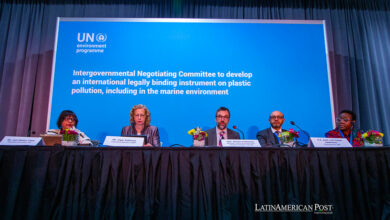Zero Tuition Panorama for Universities in Latin America
Free higher education, such as universities, is a less and less used system, but it is still valid in Latin America. Colombia recently approved a bill that includes it. What is the outlook in the region? .

Photo: Juan Gris (Lucia Estevez)
LatinAmerican Post | Luis Angel Hernández Liborio
Escucha este artículo
Leer en español: Panorama de la matrícula cero para universidades en Latinoamérica
Among the UN Sustainable Development Goals of the 2030 agenda is to improve the quality and access to education, as well as free basic education. However, some Latin American countries have upped the ante by extending free to the top tier. Colombia has approved a bill that contemplates the so-called zero enrollment for universities, but what is the regional outlook on this issue?
Read more content like this at: thewomanpost.com
The Colombian Zero Tuition Project
Student movements in Latin America have spent decades appealing to the leadership of the State in education, as well as the search for equal access to the different educational levels. The pressure of these movements has managed, among other things, to guarantee free education at all levels, including higher education in some countries, among which we can highlight Argentina, Chile, Mexico and now Colombia. Of course, each case has its own particularities. In the Colombian case, the figure of zero enrollment already existed from the Generation E program, which provides maintenance support and zero enrollment to beneficiaries who can opt for an excellence or equity scholarship. The current bill, approved by congress, is awaiting President Petro’s signature and the drafting of the regulations that will govern the new program.
Zero Tuition is aimed at supporting Colombians from strata 1, 2 and 3 with the tuition payment (the strata are socioeconomic classifications established based on the place where the person resides). That is, 1.1 million young people considered low-income , including thousands of victims of armed conflicts. It is expected to achieve a balance between the quality of education, the budget assigned by the State to universities and the sustainability of their finances by changing the way in which they receive income.
However, the establishment of the guidelines that will accurately define the operation of the program is still lacking. Among the criticisms that arise towards the program is the way in which the target population has been established through the strata system, since it is considered that it does not necessarily reflect the socioeconomic reality of people. It is feared that people with greater resources could benefit from this subsidy, which instead of reducing inequality could increase it. The experience of other countries could benefit the Colombian project, which is in an initial stage.
The reality of zero enrollment in Latin America
Chile: Since 2018, through Law 21,091, free higher education in Chile was established, it is not universal, it is aimed at the 60% of the population with lower incomes and requirements such as enrolling in universities attached to the free program must be met , with guarantees of their educational level. Allow foreign students to apply to the program.
Gratuity was born as a response to the problem of educational loans in Chile that for decades compromised the financial stability of thousands of students, who through these loans found their only way to access higher education. The governments of Michelle Bachelet and Sebastián Piñera transformed educational loans, making their rules more flexible and forgiving thousands of debts, but Chilean students continued to protest, considering the changes insufficient. Chile has been a series of corrections on the fly that have created a chaotic system still unresolved, the most questionable thing is undoubtedly its long-term economic sustainability.
You can also read: Lula vs. Congress: indigenous peoples and the environment are losing out in Brazil
Mexico: In the North American country, higher education is free and compulsory, established at the constitutional level. However, it was not until the arrival of the pandemic that the transition accelerated. Mexico has only two higher institutions of a national character , the National Autonomous University of Mexico (UNAM) and the National Polytechnic Institute, both concentrated mainly in Mexico City despite their national character. This generates an exaggerated demand in the Mexican capital, as students from all over the country travel to this city to apply to these institutions. One of the reasons is the high educational level of both, but also the low cost of their tuition. In the case of UNAM, the semester cost of tuition is barely 1 cent.
In contrast, the reality of local universities is different. The costs tend to be higher, although free of charge is established at the constitutional level, in practice it is still not applied mainly because the budgets of the universities are low and they depend on the resources they can generate.
Argentina: In this country , university education has been free since 1949 in the context of Peronism. However, during the dictatorship this did not become effective, in 1983 it could be resumed, but until 1994 it did not obtain constitutional rank. This implies a huge investment by the State in financing universities, especially because in Argentina free admission is universal, it is not conditioned on the student’s nationality or economic environment, as is the case in Chile or Colombia This is a measure considered heritage populist of Peronism that also applies to the health system. The economic situation in Argentina has once again called into question the sustainability of its free education system.
Uruguay: Access to the university is free and unrestricted , that is, it has no cost or requires admission exams like most universities. This is to ensure access for all to higher education. The size of the country and its population allow this system, impossible in countries like Mexico or Colombia due to the mismatch between supply and demand. In addition, there are scholarships and state financing in private universities that extend the admission options to Uruguayan students.





